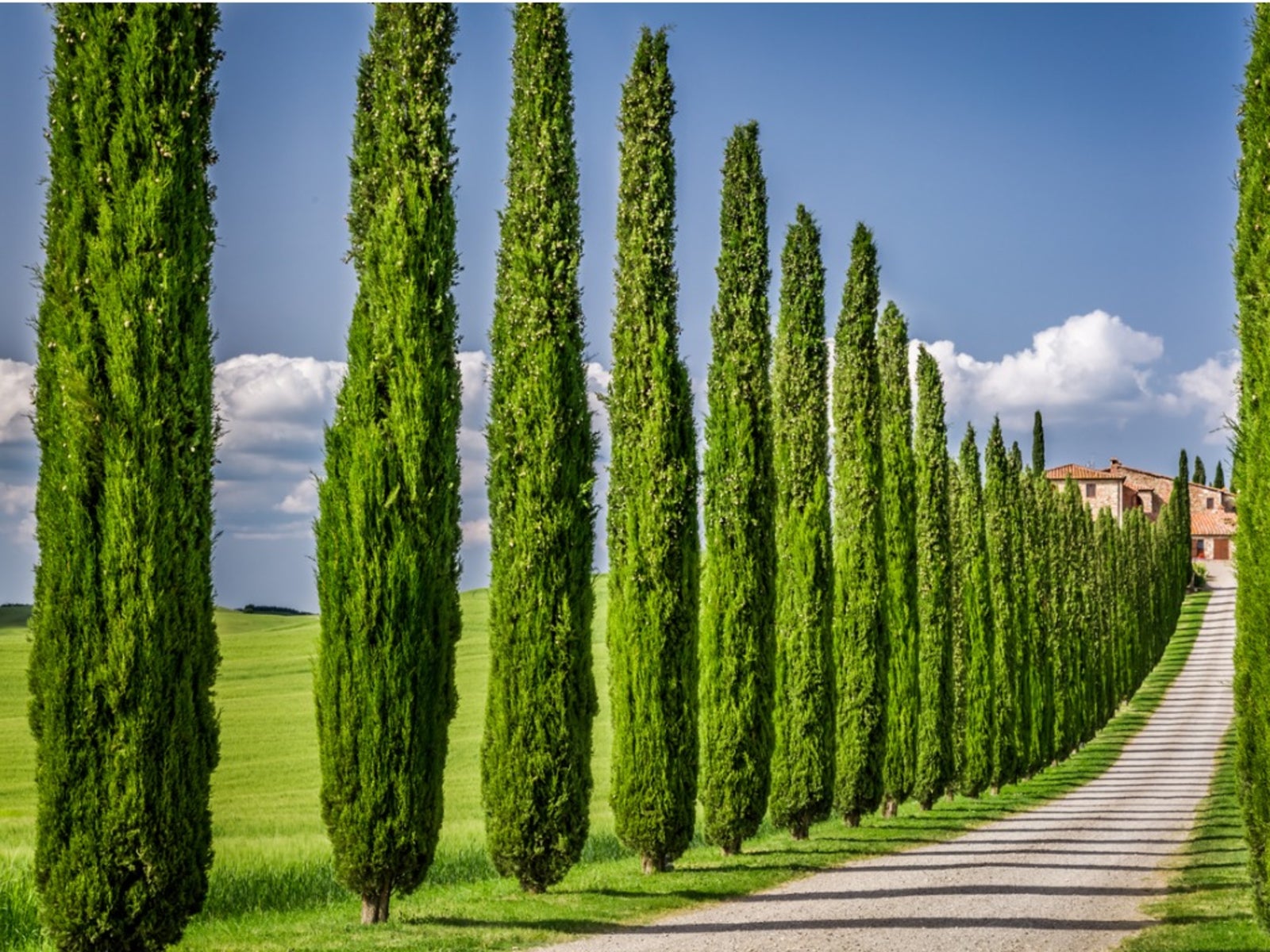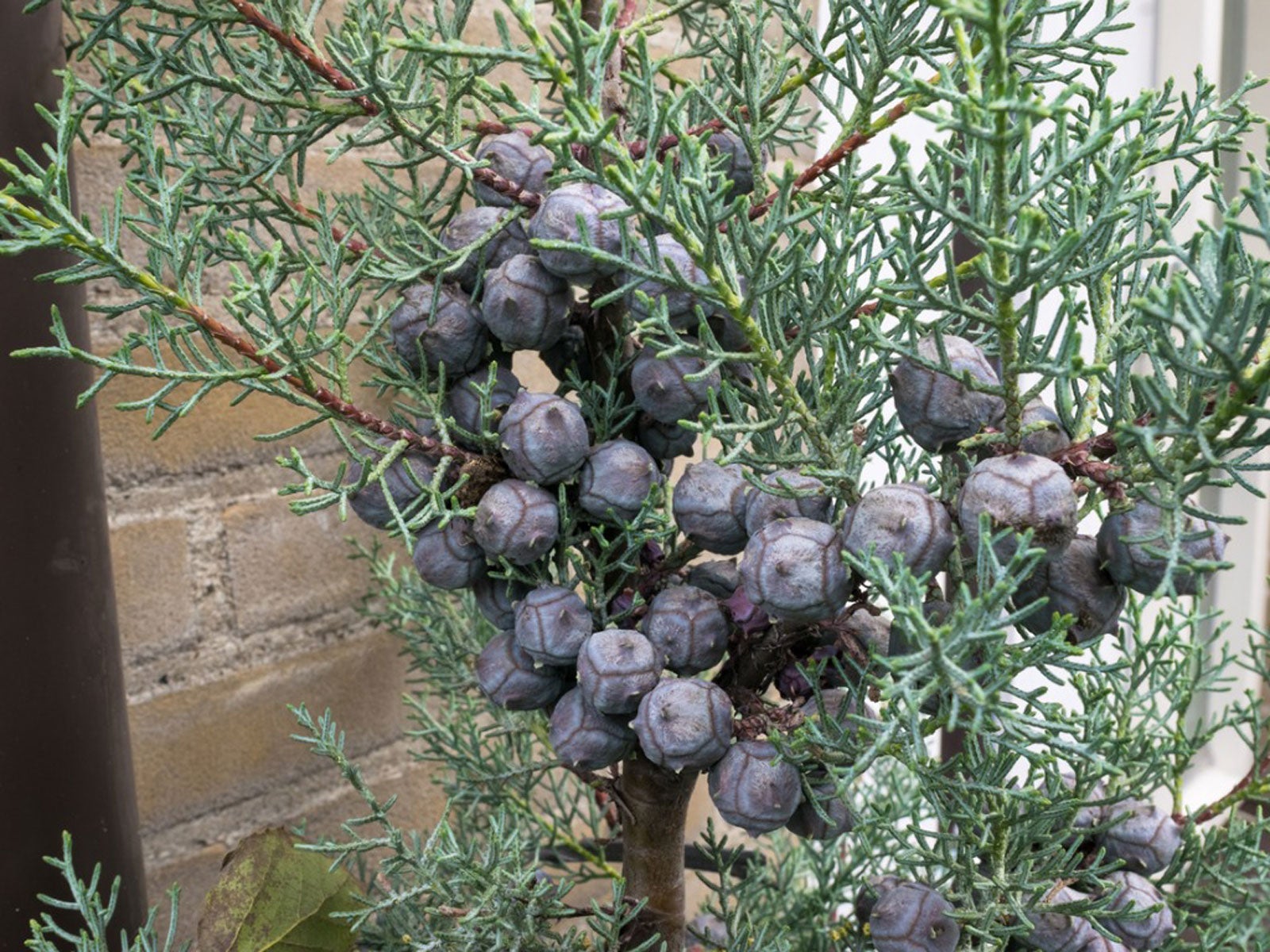Growing Italian Cypress – How To Care For Italian Cypress Trees


Tall and stately, slender Italian cypress trees (Cupressus sempervirens) stand like columns in formal gardens or front of estates. They grow fast and are relatively care free when planted appropriately. For more Italian cypress information including tips on how to grow an Italian cypress, read on.
Italian Cypress Information
These cypress trees grow in a very upright columnar shape. In fact, Italian cypress can get to 70 feet (21 m.) tall or even taller. On the other hand, they only grow between 10 and 20 feet (3-6 m.) wide. Anyone growing Italian cypress knows that these trees shoot up rapidly in the right location, often growing up to 3 feet (.9 m.) per year.
How to Grow an Italian Cypress
If you want to grow an Italian cypress, first determine if your climate will allow these trees to thrive. Italian cypress grows best in U.S. Department of Agriculture plant hardiness zones 8 through 10. Fall is a good time to plant Italian cypress trees. To start growing Italian cypress, dig holes that are three and five times the width of the plant containers or root balls.
The holes, however, shouldn’t be deeper than the root ball depth. These wide holes allow Italian cypress trees to expand their roots as they grow. If you try to start growing them in smaller holes, it may cause the roots to circle around the holes, girdling the root balls.
Care for Italian Cypress
Once you have the trees properly sited and planted, it’s time to think about proper care for Italian cypress. The first part of care involves irrigation. You’ll need to water the plants well just after planting.
Then make irrigation a part of your regular care routine. These trees are generally healthy but you should keep an eye out for spider mites. If you ignore the presence of these tiny bugs, your elegant trees will soon look in disarray. Inspecting and shaking the tree branches while holding a white sheet of paper will help detect these pests.
If tiny red bugs fall onto the paper, spray water on full blast over the tree’s foliage to dislodge them.
Gardening tips, videos, info and more delivered right to your inbox!
Sign up for the Gardening Know How newsletter today and receive a free copy of our e-book "How to Grow Delicious Tomatoes".

Teo Spengler is a master gardener and a docent at the San Francisco Botanical Garden, where she hosts public tours. She has studied horticulture and written about nature, trees, plants, and gardening for more than two decades. Her extended family includes some 30 houseplants and hundreds of outdoor plants, including 250 trees, which are her main passion. Spengler currently splits her life between San Francisco and the French Basque Country, though she was raised in Alaska, giving her experience of gardening in a range of climates.
-
 Looking For Plants To Give You The Soft And Fuzzies? Try These 5 Fuzzy Leaf Plant Options
Looking For Plants To Give You The Soft And Fuzzies? Try These 5 Fuzzy Leaf Plant OptionsLovers of texture, drama, silver foliage and tactile plants will adore these special sensory garden additions. These fuzzy leaf plant options will leave you all aglow
By Susan Albert
-
 Get Ready For A Summer Of Hummers! Grow These Full Sun Hummingbird Plants and Flowers
Get Ready For A Summer Of Hummers! Grow These Full Sun Hummingbird Plants and FlowersIf you’re lucky enough to enjoy a sunny backyard, make sure you are maxing out on your pollinator opportunities and grow these full sun hummingbird plants and flowers
By Tonya Barnett
